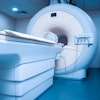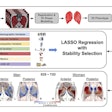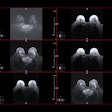Is AI ready to replace or assist radiologists in prostate MRI interpretation and reporting? Not yet, according to a new commentary that advises a cautious approach to AI implementation – although this viewpoint is robustly challenged by a second commentary posted on 9 July by European Radiology.
"The evidence about commercially available AI products does not demonstrate that AI can alleviate the workload and reduce the time-intensive nature of these tasks," noted Dr. Maarten de Rooij, PhD, an abdominal/prostate radiologist and researcher at Radboud University Medical Center, Nijmegen, the Netherlands. "The cost-effectiveness of AI in the prostate cancer diagnostic pathway remains unproven."
While AI holds promise for future applications, significant barriers – e.g., intended use to operate fully autonomously and other legal and financial considerations – must be addressed before it can be integrated into clinical practice. As the technology evolves, ongoing research and prospective studies will be crucial in determining the optimal role of AI in enhancing prostate MRI interpretation, he wrote in his piece, entitled "Prostate-MRI reporting should be done with the aid of AI systems: Cons."
The adoption of an upfront MRI in the diagnostic pathway has led to a significant increase in the volume of requested prostate MRI scans, and this has exacerbated the workload of radiology departments, de Rooij argued. Also, the process of interpreting prostate MRI is time-consuming, involving the generation of detailed reports, contouring lesions for targeted biopsies or (focal) treatments, and comparing current scans with previous ones for active surveillance, follow-up, and disease recurrence.
Diagnostic accuracy is another important factor, he pointed out. Radiologists generally show high sensitivity values for ruling out clinically significant prostate cancer, but specificity can vary significantly due to the complexity of prostate MRI interpretation, and misinterpretations can lead to unnecessary biopsies, wrong characterization, and missed diagnoses.
AI systems have shown comparable or better performance to human radiologists, but often the results are limited by their retrospective nature and the narrow task descriptions. AI tools typically focus on detecting suspicious lesions and do not generate a comprehensive clinical report, de Rooij added. Also, AI systems do not feature the detection of incidental findings and the characterization of benign causes of an elevated serum prostate-specific antigen (PSA) level.
Most AI products promise a reduced workload due to shorter reporting times, but in real-world clinical practice, the integration of AI fails to reduce radiologists' stress or workload meaningfully, he continued. Given the limited evidence supporting the cost of AI software, its implementation may not be justifiable, and determining who will bear these costs -- healthcare providers, insurance companies, or patients -- remains an unsolved issue.
"For AI to be genuinely beneficial, it should operate autonomously in certain routine tasks, such as the automatic reporting of straightforward cases," he stated. "The legal responsibility for AI-driven decisions remains a significant concern. The potential for AI to make critical errors raises questions about liability and the role of human oversight in ensuring patient safety."
Significantly, de Rooij wished to emphasize that both authors were asked to write the viewpoints for this specific "pros and cons" discussion. "This is not per se my personal opinion, but my take on this topic from the 'con’ viewpoint," he told AuntMinnieEurope.com. "Personally, I am not against the use of AI (see our recent PI-CAI publication in Lancet Oncol), but I do indeed see some hurdles to take before we can really rely on the power of AI."
The opposing view
In his commentary, Dr. Tobias Penzkofer, from the Department of Radiology at Charité Universitätsmedizin Berlin, stated that radiologists must be ready for the application of AI in reporting. "Prostate MRI already offers the chance to get your feet wet, with applications already on the market. Introducing these solutions now, as an AI pilot program, will help to mitigate the challenges associated with the introduction of new technology, such as how to set up training programs for the applications and how to overcome the potential resistance to change in the workforce."
AI brings several convenience factors to prostate MRI reporting, such as automatic prostate segmentation and volumetry, which allows for automatic calculation of PSA density, potentially with higher fidelity compared with the traditional ellipsoid formula. Also, automatic structured report creation from AI annotations and segmentation, even if revised by the reader, can contribute to the clarity and consistency of reports, he wrote.
Ultimately, these systems are cleared from a regulatory standpoint and can therefore be used in the daily clinical routine, at least as a preliminary read for later refinement or a confirmatory read in a virtual two-reader setting, he noted. "Even if these systems are not perfect now, we should be part of the ongoing process of refinement and iterative perfection. The time is now, and we should embrace this opportunity."
You can access the Penzkofer piece here. To read the de Rooij article, click here.





















